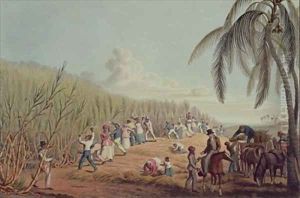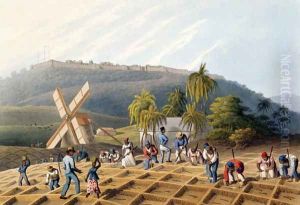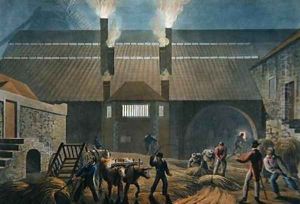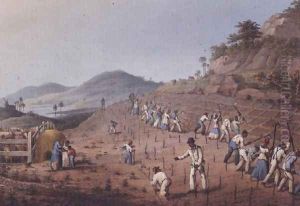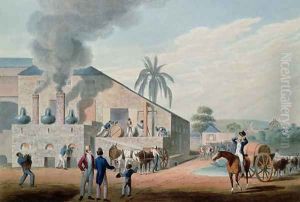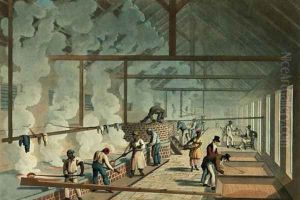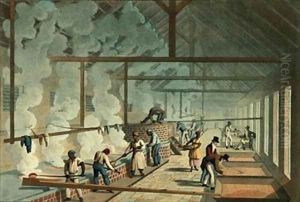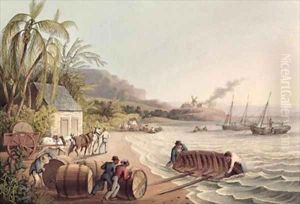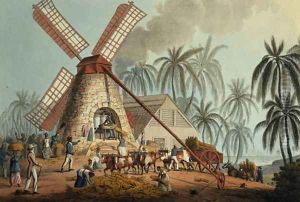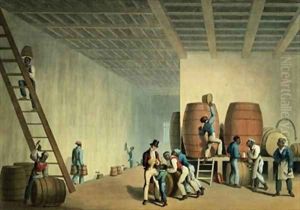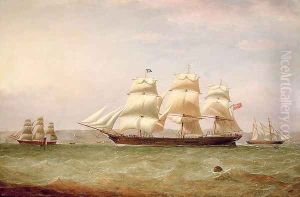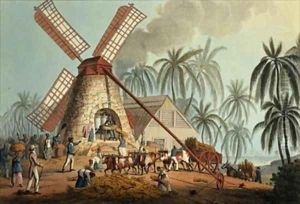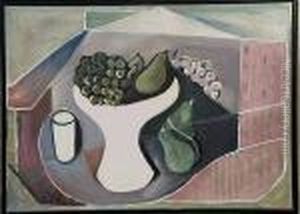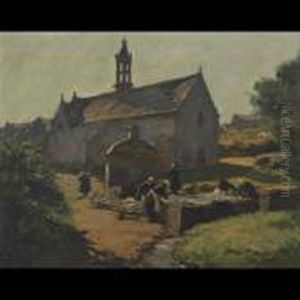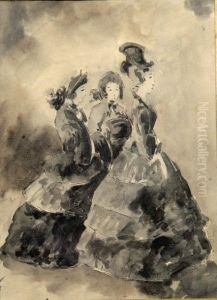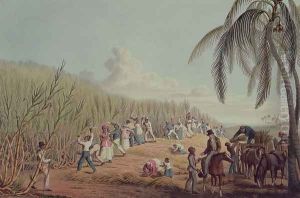





Slaves Fell the Ripe Sugar, Antigua, 1823
-
About Reproduction
Discover the allure of art with our faithful reproduction of "Slaves Fell the Ripe Sugar, Antigua, 1823", originally brought to life by the talented William Clark. Unlike posters or prints, our hand-painted oil painting breathes an unique sense of depth and texture into your space. Every detail, every stroke, and every texture is meticulously recreated, paying the perfect homage to William Clark and his artistic vision.
Owning this piece is more than just decoration - it's a statement of your refined taste in art. Let the vibrant colors and intricate details of this replica serve as a daily reminder of the beauty in our world. Elevate your decor and appreciate the richness of art with our replica of this masterpiece.
-
Painting Description
"Slaves Fell the Ripe Sugar, Antigua, 1823" is a historical artwork by William Clark, an artist known for his depictions of Caribbean plantation life in the early 19th century. This particular piece is part of a series that Clark produced during his time in the West Indies, which aimed to document the daily activities and landscapes associated with the sugar industry, including the harsh realities of slave labor.
The artwork serves as a visual record of the colonial era, capturing the brutal conditions under which enslaved Africans worked on the sugar plantations of Antigua. It is characterized by its detailed portrayal of the figures, the tropical environment, and the agricultural practices of the time. The image is significant not only for its artistic merit but also for its historical value, providing insight into the economic and social structures of the period.
"Slaves Fell the Ripe Sugar, Antigua, 1823" is often analyzed in the context of colonialism, the transatlantic slave trade, and the plantation economy. It is a poignant reminder of the human cost of the sugar that was in high demand in Europe and the Americas. The artwork is an important educational tool, used to discuss the legacy of slavery and its impact on the Caribbean and the wider world.
As a piece of historical documentation, the artwork is a critical source for historians and scholars studying the period. It is also of interest to art historians who examine the ways in which the realities of slavery were depicted by contemporary artists. The piece is frequently referenced in discussions about the representation of enslaved people in art and the role that such images play in shaping our understanding of history.
In the context of public collections, "Slaves Fell the Ripe Sugar, Antigua, 1823" is an example of the type of work that museums and galleries might seek to include in their exhibits on colonial history or the history of slavery. It is a powerful visual statement that continues to resonate with audiences today, prompting reflection on the past and its continuing relevance.
-
Lead Time & Shipping
When you order this oil painting replica, it typically takes 2-3 weeks to paint. If the artwork is more complex, it might need a little more time to ensure the best quality. Once it's ready, we'll send you a photo for your approval. After you give the green light, we'll ship it to you for free.
-
Return & Refund
We believe in the quality of our hand-painted oil painting reproductions, and your satisfaction is our priority. If for any reason, you are not completely satisfied with your purchase, we offer a 45-day return policy. You can return your artwork within 45 days of receipt and receive a full refund. Please note that the artwork must be returned in the original packaging and in the same condition as it was received.





